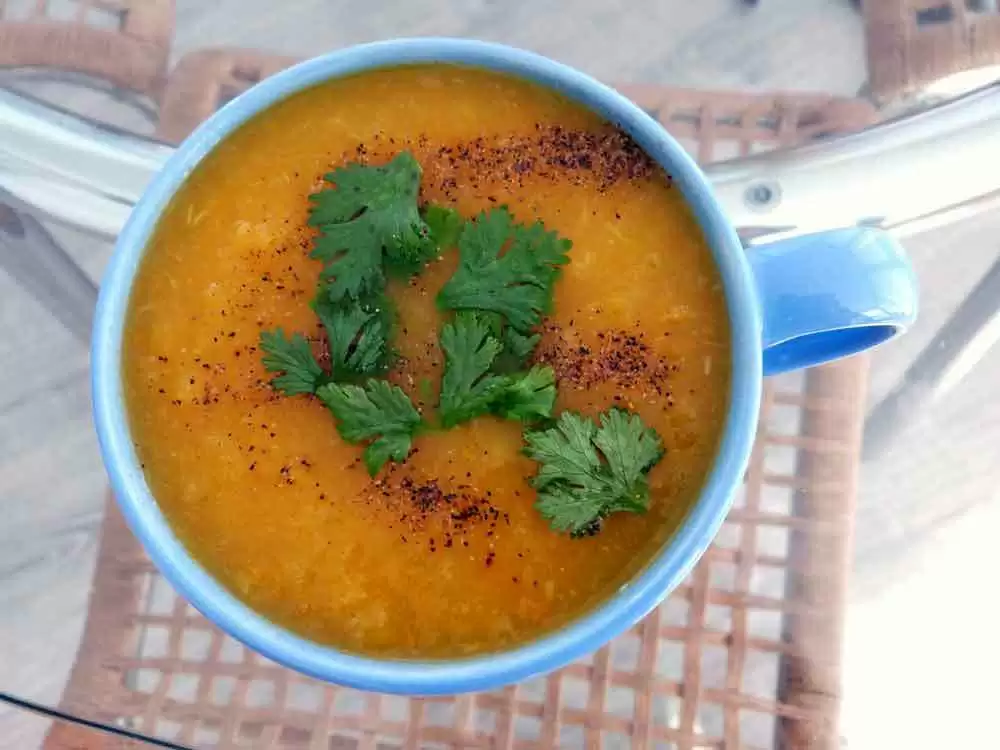
Celiac.com 08/28/2020 - Have you checked your grocery bill lately? Chances are you are experiencing sticker shock. Food, like everything else, is costing more.
Have you been inundated with articles and news snippets about eating healthier and the need to get more fiber in your diet?
Celiac.com Sponsor (A12):
So now you are trying to save on your grocery bill… and eat healthier… AND adhere to a gluten-free diet. Like all problems in life, this one is not insurmountable. There are always viable, wise choices. With a little pre-planning, you can cut that grocery bill and eat healthier and stick to your diet.
First, make a weekly menu plan. It will reduce trips to the grocery store (saving both time and petro) and help reduce impulse spending. As you make your menus, check out the pantry, refrigerator, and freezer to see what foods you can use that you already have on hand (cutting food cost for the week). Planning menus ahead gives you time to incorporate healthier foods.
Once you have a list of foods you already have on hand, scour the grocery store ads in your local newspaper and build your meals around the weekly specials. Then take a look at your calendar. Plan to make the longer-cooking items (roasts for example) on the days you will be home all afternoon and think of quicker meals on the days you walk in the door at 5:30 p.m.
Figure out a novel way to use up leftovers for dinner one night a week. If you have 8 meatballs, 6 chicken wings, a partial bowl of leftover peas (or green beans, or asparagus, or most any vegetable), and some rice left over, you can serve this ‘as is’ like a picnic, or you can spread the rice in a casserole, sprinkle the peas over the rice, lay the chicken wings and meatballs on top, then stir together 1 tablespoon of Just Like Lipton Onion Soup Mix with a can of Progresso Creamy Mushroom Soup and spoon in over the top – bake, and voila! You have a ‘new’ dinner from leftovers. Planning leftovers once a week will save money, but it will also save you the hassle of cooking from scratch one night.
Below are meal suggestions that are both lower in cost and higher in nutrition.
Healthier Lower Cost Breakfasts
Gluten-free breads are pricey, so ration their use. Save them for packing lunches and find other alternatives for breakfast. Make a breakfast burrito with a corn tortilla, scrambled egg, grated cheddar cheese and a little salsa (adding bacon, ham or sausage adds to the cost and to the fat content). Fold cut-up fresh or juice-packed fruit into plain yogurt (this is healthier and less expensive than pre-packaged fruit yogurt). Make a smoothie with frozen or fresh strawberries (which are less expensive than raspberries or blueberries), milk, yogurt, and a dash of vanilla. For kids, spread a banana with peanut butter and serve with a muffin. Chi Chi’s makes a Sweet Corn Cake Mix (cornbread or corn muffins) that is gluten-free, cost-effective and sold in regular grocery stores. (While Chi Chi’s Restaurants are out of business, their food line is still being produced.) When making homemade muffins, add the following to your batter: 2 tablespoons ground light flaxseed meal dissolved in 2 tablespoons water and shredded “something” for fiber and nutrition (shredded carrots, apples, pears or zucchini, chopped walnuts, unsweetened coconut, or chopped dried fruit). If you opt to make homemade pancakes, add something for nutrition (flaxseed meal, shredded fruits, mashed bananas) and top with fruit topping or all-fruit jelly instead of sugar-rich maple syrup.
Healthier Lower Cost Lunches
Low fat, low sodium turkey breast costs far more at the deli than it does to roast turkey tenderloin at home and slice it thin for sandwiches. It only takes an hour to bake or 25 minutes to grill – the time spent cooking it is worth it. You will be eating a healthier sandwich at about half the cost. Tuna salad sandwiches are popular; chop in plenty of green pepper, onion, celery, and carrots, use just enough mayonnaise to hold the mixture together, then top with lettuce and sliced tomatoes for a healthier version of an old stand-by. If you cook a beef roast, pork roast, or meatloaf the night before for dinner, reserve a few slices for tomorrow’s lunch. Kids love pizza – Make their pizza on a corn tortilla with chopped veggies on top instead of sausage or pepperoni, and use half the cheese to cut back on fat and cost. Season a small can of tomato sauce for the pizza instead of using pricier, higher sodium, prepared pizza and spaghetti sauces. Think salads… Put some lettuce in a plastic container and top with last night’s vegetables, sliced meat, and a few strips of cheese. Again, you will be recycling what you already have on hand. A little steamed quinoa goes a long way when making a healthy tabouleh salad. Boil a small amount of gluten-free elbow pasta then slice in lots of fresh veggies (carrots, green onions, broccoli, beans, celery, cauliflower, peas) and you have a healthy pasta salad. Tacos can be as healthy or unhealthy as you choose to make them. A half pound of lean ground meat can easily make 4 corn tacos so it stretches your grocery dollar and lowers your fat consumption. Top the meat with a little bit of grated cheese and a lot of shredded lettuce and chopped tomato or low sodium salsa. Skip the sour cream – it costs money to buy, adds fat calories, and a taco can still taste great without it. One cup of gluten-free flour mixture will go a long way when you add chopped green onion, minced green pepper and shredded cheddar cheese to make waffles to use as a base for sloppy joes instead of expensive gluten-free buns.
Healthy Lower Cost Dinners
Remember that beef roast you made for dinner last night and those leftover vegetables? Chop them up; thicken some gluten-free beef broth with a little cornstarch, then make a pie crust for a beef pot pie. Or shred the remains of the roast, add a little barbeque sauce and spoon over the cheese waffles mentioned above. If a typical serving of meat in your household is 6-8 ounces, reduce that to 5 ounces. Eating less meat is healthier and will save on the grocery bill. You can stretch meat by adding lots of fresh veggies to stews, soups, stir-fries and casseroles. The white meat of a chicken is healthier for you than the dark meat, so stock up on chicken breasts when they are on sale. Don’t pay extra for skinless breasts; remove the skin yourself and save a few cents. Other meals that are both cost-effective and healthy include shepherd’s stew, baked chicken with vegetables, meatloaf (filled with shredded veggies), soups and stews, veggie chow mein served over rice noodles, tuna quesadillas or tuna rice casserole, and canned salmon casserole (fresh salmon can be quite costly). Make a large pot of chili, and then freeze the leftovers to use over hot dogs or hamburgers, on top of spaghetti or rice, over corn pancakes, to stuff a baked potato, or to use in tacos or taco salad.
Healthy Lower Cost Side Dishes
Brown rice is far healthier for you than processed pasta and costs less per serving than gluten-free pasta, so use the pastas sparingly. One night, make red beans and rice; the next night add salsa to make Mexican rice. Potatoes and beans are two of the least expensive items at a grocery store and both are tasty and filling and healthy. Add an extra can of beans to a pot of chili to make it stretch further and add extra fiber. Add beans to salads, casseroles, and rice dishes. Instead of serving baked beans which are high in sugar, bake your own Creole beans. Potatoes are good for you – it’s what we add to the potatoes that can be the problem. Roasting potatoes that have been sprinkled with dill, salt, pepper and a little olive oil costs far less and is more nutritious than topping potato slices with heavy cream and cheddar cheese and baking. If you roasted too many potatoes and have some left over, recreate them into a potato salad for tomorrow’s side dish or mash them with a little milk, butter and parmesan cheese to make mashed potatoes. If you have mashed potatoes left over, stir in some shredded zucchini, carrots, green pepper and green onions to make latkes. Cabbage is usually a bargain, so stuff it, boil it, add it to salads, stews, soups, and shred it for cole slaw. In the fall, zucchini is a good buy, so that’s the time to make a zucchini tomato casserole, zucchini bread, ratatouille, and grilled zucchini slices. If your family loves French fries, serve them healthier fries -- Make them from sweet potatoes and bake them instead of deep frying.
Healthy Lower Cost Desserts
One box of tapioca can provide dessert for multiple evenings when you make homemade tapioca pudding. The homemade version is healthier and less expensive than pre-packaged mixes. Baked custard is another inexpensive and healthy dessert if you cut back on the sugar just a bit. Less expensive yet is homemade rice pudding; make it with brown rice and 2% milk for added health benefits. In the fall, round up the family to go apple picking (apples cost must less this way). Make baked apples for dessert one night. Slice a few to make Dutch apple pie – instead of using a fattening pie crust, opt for a deep dish pie with the healthier pure oats granola-type topping. If you picked too many apples and they are starting to go soft, chop them up and make a pot of homemade applesauce. Layer frozen yogurt, cut-up fruit, and crushed gluten-free cinnamon-flavored cereal in parfait glasses. Use up those slices of gluten-free bread that crumbled or dried out by making bread pudding; add diced peaches or apples to the pudding when they are in season. Puree juices or fruits you have left in the refrigerator and make homemade popsicles. Make a sweet potato pudding (it tastes very much like pumpkin pudding).
The healthy choices are endless. The budget choices are out there but you have to shop for fresh products that are in season and watch the paper for sales. Online, there are many sites that offer money-off coupons. Eating can still be fun, safe, healthy and cost-effective with just a little bit of planning.
Gluten-Free Baked Stuffed Zucchini
This recipe is from the “Wheat-free Gluten-free Reduced Calorie Cookbook” by Connie Sarros. The stuffed zucchini may be assembled ahead of time and frozen without the cheese topping. Thaw before baking.
Ingredients:
- 4 small zucchini
- 2 teaspoons olive oil
- 2 onions minced
- ½ pound lean ground beef
- 2 tablespoons chopped fresh parsley
- ¼ teaspoon salt
- 1/8 teaspoon pepper
- ¼ teaspoon mint
- ¼ cup spaghetti sauce
- 1 egg, beaten
- ¼ cup grated Parmesan cheese
- 1 teaspoon milk
- Paprika
Directions:
Preheat oven to 350F degrees. Cut each zucchini in half lengthwise; scoop out the pulp, leaving the shell intact. Chop the pulp. Heat the oil in a 10-inch skillet. Add the onion and ground beef; sauté, breaking up the meat with a fork. When the meat is browned, drain off any fat. Stir in the zucchini pulp, parsley, salt and pepper, mint, and spaghetti sauce; simmer for 5 minutes. Spoon the filling into the shells and place the shells in a baking dish. Bake 35 minutes or until shells are soft but still hold their form. Preheat broiler. Mix the eggs, cheese, milk and a dash of salt and pepper; spread on top of the stuffed zucchini. Sprinkle each with paprika. Place under the broiler for 3 minutes to brown. Serves 8 as a side dish; serves 4 as a main entrée.








Recommended Comments
There are no comments to display.
Create an account or sign in to comment
You need to be a member in order to leave a comment
Create an account
Sign up for a new account in our community. It's easy!
Register a new accountSign in
Already have an account? Sign in here.
Sign In Now